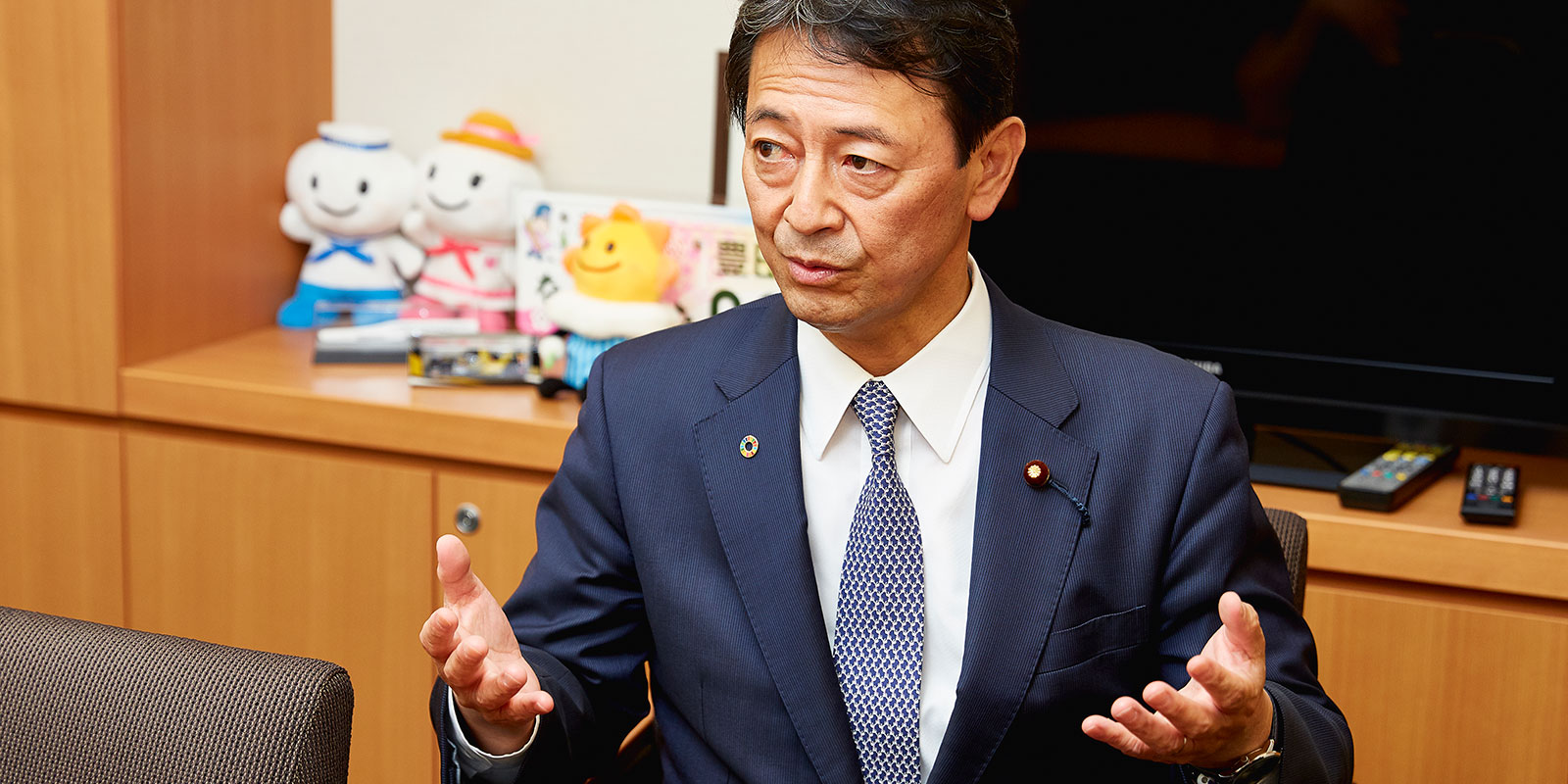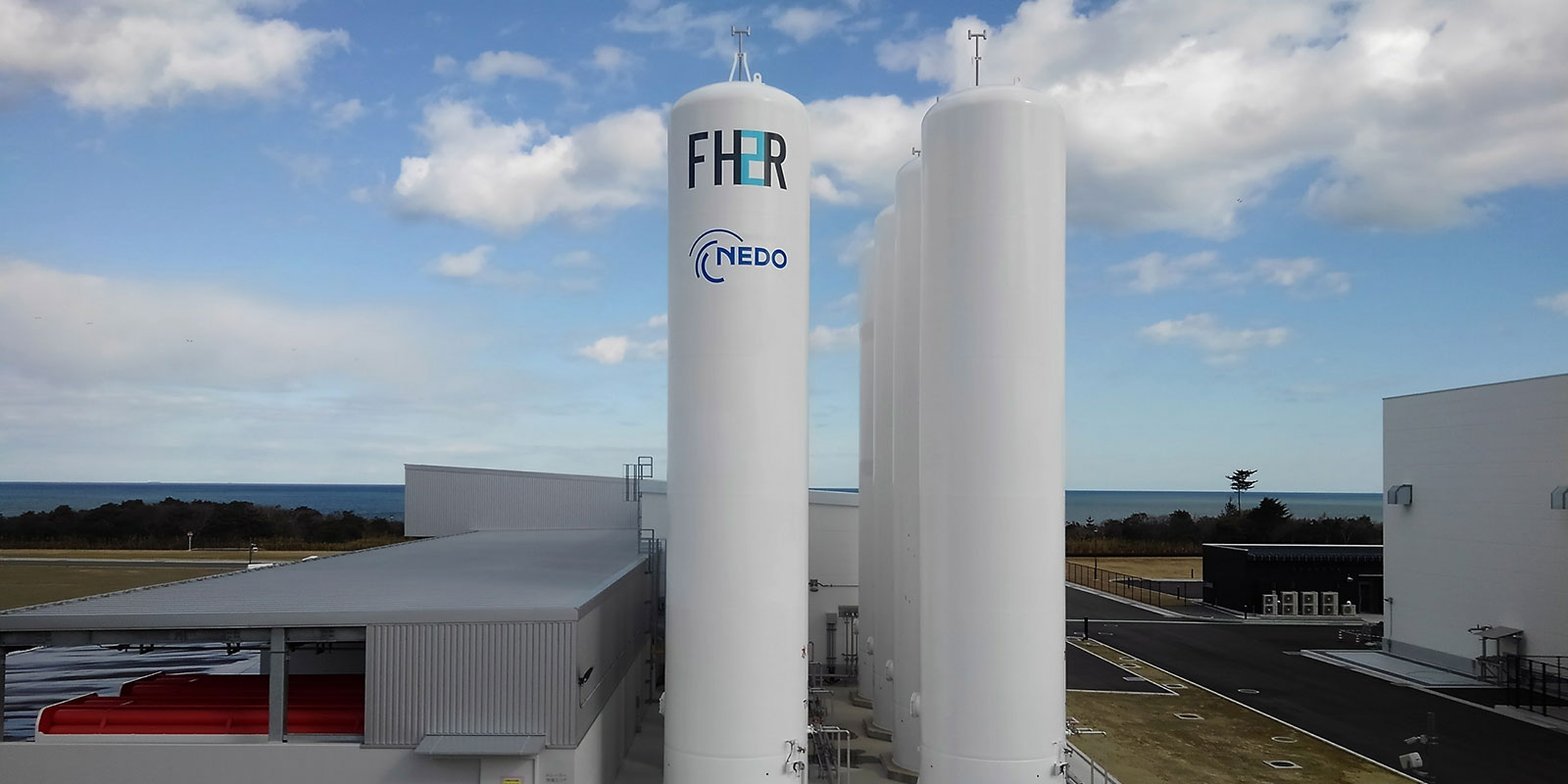Hydro power
Shozo Kudo has risen from local politics in his Nagoya to the national legislature, where he is serving his third term. Formerly the Director of the Committee on Land, Infrastructure, Transport and Tourism, Kudo is a strong advocate of hydrogen energy. He talks to Yukie Yamashita about the benefits hydrogen can bring the country
What are the challenges that need to be overcome in order for hydrogen use to become more widespread?
Japan lacks major fossil fuel resources such as oil, coal and natural gas, so the question of how to procure these is a constant issue. Hydrogen, which is found everywhere on the planet, is the ultimate renewable energy source and has the potential to solve Japan’s problem of scarce resources.
How did Japan come to push for research into hydrogen?
The use of hydrogen as an energy source has been studied for a long time. For example, Iwatani Corporation, an industrial and household gas trading company, has been researching hydrogen for over 70 years. Perhaps the earliest public hydrogen initiative in Japan was the Fuel Cell Vehicle (FCV) parliamentary study group proposed by Tokyo governor Yuriko Koike. It was set up with the aim of achieving a hydrogen- driven society by the time of the Tokyo Olympics, and to run hydrogen-powered FCVs. In October 2020, prime minister Yoshihide Suga declared that Japan would aim for carbon neutrality by 2050, which brought hydrogen and [renewable fuel] ammonia into the spotlight.
 Keisuke Tanigawa
Keisuke Tanigawa
“Hydrogen, which is found everywhere on the planet, is the ultimate renewable energy source”
What are the challenges that need to be overcome in order for hydrogen use to become more widespread?
There are still issues to be addressed, such as how to produce hydrogen using clean electricity. One of the main challenges is to establish a way to produce “green” hydrogen using clean electricity, without relying on fossil fuels.
There’s also the issue of cost. For example, to promote the use of hydrogen cars there are many problems to be solved, such as improving the infrastructure of hydrogen stations and improving the energy efficiency of these vehicles. In the wake of the coronavirus pandemic, the whole world including Japan has taken major steps towards achieving a greener society. Europe in particular is focusing on hydrogen, and France and Germany have announced that they will commercialize the technology needed to generate energy from hydrogen.
Japan has been leading the way in terms of technology over the past decade. However, due to hurdles in areas such as testing and regulation, it has not been possible to put this technology to practical use. Members of the Diet, the national legislature, and others are working to break down these barriers.
What are some of the ongoing efforts to promote the use of hydrogen?
We are now at the stage where we have gone from research to demonstrations to widespread use. For example, we are working on the use of hydrogen- powered FCVs for emergencies and disasters. One of the most important aspects of expanding the use of hydrogen technology is awareness of its safety. Unlike petrol or natural gas, hydrogen is invisible and has no smell. This makes it difficult to communicate its safety.
The more people know that the electricity they use every day is generated by hydrogen, the more they will understand. This is the first step and it’s necessary to reduce costs. The mere sight of a pile of red-colored tanks of hydrogen can give the public the impression of danger. At the moment there are a number of regulations that make it difficult to change the system, but the Agency for Natural Resources and Energy and parliamentarians are working together to make this happen.

“Japan has been leading the way in terms of technology over the past decade. However, it has not been possible to put this technology to use”
How about private sector initiatives?
In December 2019, the world’s first liquefied hydrogen carrier, Kawasaki Heavy Industries’ Suiso Frontier, started transporting hydrogen with the aim of building an international hydrogen energy supply chain. In March 2020, the Fukushima Hydrogen Energy Research Field (FH2R), one of the world’s largest hydrogen production facilities, was completed in Namie, Fukushima Prefecture. Also, Toyota’s fuel cell vehicle, the Mirai, is undergoing a full model change.
What does the future look like for hydrogen research and rule-making?
We are lobbying for an international framework of rules concerning the procurement of fuel for hydrogen production. We are also actively working to create an environment in which hydrogen researchers can immerse themselves in research, and to attract foreign researchers to Japan.
How is hydrogen positioned in Japan’s next Basic Energy Plan?
When we think of using hydrogen for power generation, the first major issue is its low energy efficiency. We have to start by improving this. Secondly, when we think about the use of green hydrogen produced with clean energy, we must take into account the situation of renewable energy in Japan. With its mountainous terrain, Japan doesn’t have as much land available for large-scale solar power generation as the US or some Middle Eastern countries. If we want to go for clean hydrogen energy, we should also consider the problem of disposal and recycling of solar panels.
What is the potential for hydrogen use in industry?
In the future hydrogen could be used to curb carbon dioxide emissions in the steel industry and other industries that consume large amounts of electricity. However, in order to make this technology practical, costs must be reduced. The production of cheap hydrogen is a challenge for the industrial sector.
Japan’s largest steelmaker, Nippon Steel Corporation, has a demonstration project to use hydrogen to reduce carbon dioxide emissions in the steelmaking process. Likewise, chemical manufacturer Showa Denko is working on a chemical recycling project to produce hydrogen from used plastics such as PET bottles.
“The commercialization of hydrogen technology can be a very big step for Japan in increasing its presence in the world”
How could hydrogen vehicles be promoted further?
There are still no hydrogen refueling stations at highway service areas in Japan. This infrastructure needs to be improved in order for hydrogen cars to be practical.
Are there any private sector initiatives to promote the use of hydrogen?
In December 2020, 88 companies including Toyota, Sumitomo Mitsui Financial Group and Iwatani Corporation launched the Japan Hydrogen Association. This is groundbreaking in that it involves not only manufacturers and companies working on technology development, but also trading companies and financial institutions –they play an essential role in selling Japanese technology abroad and raising funds for new technology development. The commercialization of hydrogen technology can be a very big step for Japan in increasing its presence in the world. New technologies are being researched, such as the production of hydrogen by plants during photosynthesis. The government is ready to support companies in taking new risks if necessary.
Where will hydrogen use be by 2030?
Hydrogen can be a purely domestic energy source, free from geopolitical risks and a pillar of a stable supply. Ideally, we would like to be generating electricity from purely domestic hydrogen by 2030, leading to carbon neutrality by 2050. To achieve this we need to gain the trust of our citizens. Electricity supports all civic and economic activities. It’s important to keep that in mind while saving electricity and producing it for use many years down the road.